11 Activities That Engage Young Children with Nature
April 9, 2024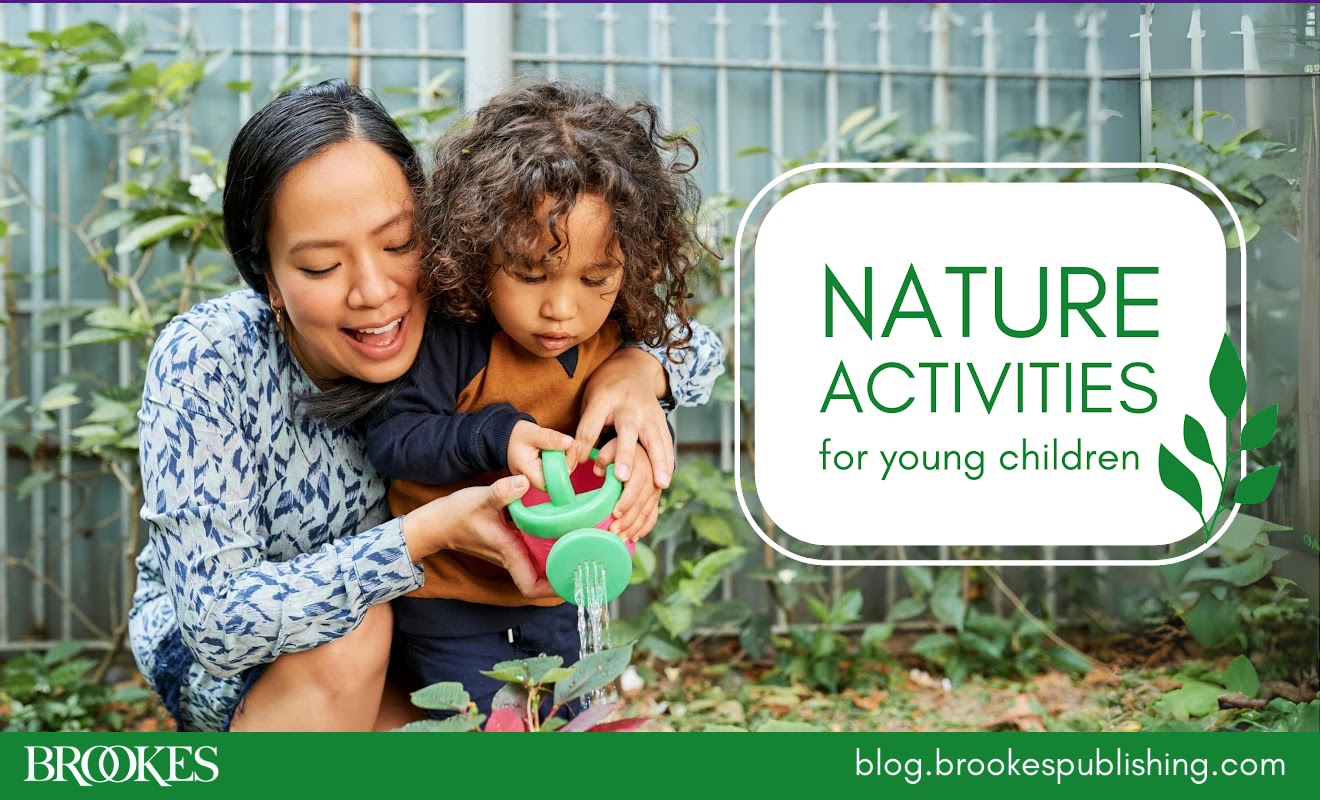
As we say goodbye to winter and welcome spring, the families you work with might enjoy some fun nature-themed activities to get their kids moving, exploring, and interacting with the world around them. Adapted from new and classic Brookes books, these activities engage young children with the natural world and help boost key areas of development at the same time. Share these with parents and caregivers to enhance learning, connection, and appreciation for the fascinating gifts of nature!
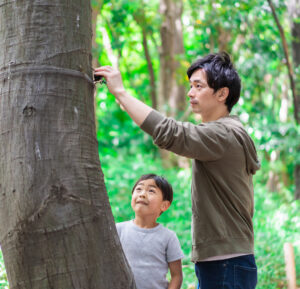 Take a hike. Pack up a wagon or backpack with snacks and with plastic bags, pails, or other containers for collecting interesting objects and a journal or camera (real or pretend) for recording interesting sights and experiences. Sing traveling songs on your hike. Hunt for rocks, seeds, shells, bugs, flowers, or shapes such as triangles, squares, circles, and octagons. Make up stories about the real or magical creatures that live in rocks, trees, or under the ground. When you return, help the child make a collage or scrapbook so they can tell others what they discovered on the hike.
Take a hike. Pack up a wagon or backpack with snacks and with plastic bags, pails, or other containers for collecting interesting objects and a journal or camera (real or pretend) for recording interesting sights and experiences. Sing traveling songs on your hike. Hunt for rocks, seeds, shells, bugs, flowers, or shapes such as triangles, squares, circles, and octagons. Make up stories about the real or magical creatures that live in rocks, trees, or under the ground. When you return, help the child make a collage or scrapbook so they can tell others what they discovered on the hike.
Explore nature in your neighborhood. Nature can be observed in city neighborhoods, too. On your next walk around the neighborhood with the child in your life, peek into little places you might not ordinarily think to explore. Study sidewalk cracks, turn over a rock, peer into a storm drain. Trace the roots of trees and bushes. Pull up a weed and investigate its roots. When you’re home again, encourage the child to represent these new discoveries by telling stories or drawing pictures about it.
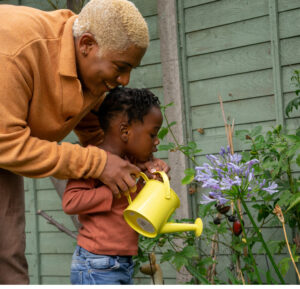 Plant a garden. Radishes, marigolds, and beans germinate fairly quickly, and children can start them in paper cups or directly in the garden. Children can plant fast-growing herbs such as mint, parsley, basil, and chives in a window box or container or along a path and pick them to flavor their mud pies and tea party drinks. As you involve children in digging, planting, watering, checking on growth, and harvesting, talk about what the plants need to grow and all the ways that people help them. Encourage children to look for changes in their plants and talk with you about what they see.
Plant a garden. Radishes, marigolds, and beans germinate fairly quickly, and children can start them in paper cups or directly in the garden. Children can plant fast-growing herbs such as mint, parsley, basil, and chives in a window box or container or along a path and pick them to flavor their mud pies and tea party drinks. As you involve children in digging, planting, watering, checking on growth, and harvesting, talk about what the plants need to grow and all the ways that people help them. Encourage children to look for changes in their plants and talk with you about what they see.
Plan a nature-themed scavenger hunt. You can do this close to home in your neighborhood, or someplace you are visiting. Give each child or team a list of things to find—for example, something green, something round, something that holds water, or something that begins with the letter a. Go over the list to make sure that each child or team can read all the items. (You can use picture or color clues to help beginning readers.) As they see items on the list, children can check them off. When all items have been found, have kids report back and share their discoveries.
Go on a rainbow nature walk. While walking around outside, in your community or in another area, have children pick up pieces of nature that represent different colors of the rainbow.
Collect and study rocks. Have children collect a variety of interesting rocks from your backyard, a nearby park or creek, or around your neighborhood. Set up a simple scientific exploration center with supplies like a magnifying glass, egg cartons and other containers of various sizes, and clear bowls of water. Show kids how to examine the details and texture of each rock with the magnifying glass, see what happens to the water level in a container when rocks of different sizes are dropped in, and sort the rocks by features like color, size, and texture. Kids might like to keep and display the rock collection in a decorated egg carton once the scientific exploration is done.
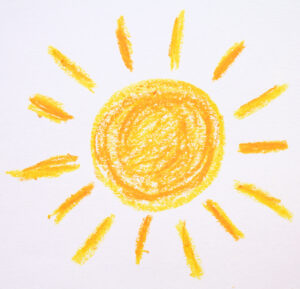 Ask for the weather report. At the start of the day, ask your child to look out the window and tell you about the weather. Is it sunny? Is it cloudy? Is it raining? What will the weather be today? Have the child draw a picture of the weather: a sun if the day is sunny, raindrops if the day is rainy, and so on.
Ask for the weather report. At the start of the day, ask your child to look out the window and tell you about the weather. Is it sunny? Is it cloudy? Is it raining? What will the weather be today? Have the child draw a picture of the weather: a sun if the day is sunny, raindrops if the day is rainy, and so on.
Go moongazing. When the moon is visible, find a place to look at the moon and stars with your child. Explore your child’s imagination: “What do you see? Can you connect the stars to make a picture? What do you think it is like on the moon? What would you do there? How would you feel about being so far away from Earth? (If your child is especially interested in learning more about the moon and space, check out these book recommendations from We Are Teachers and PBS.)
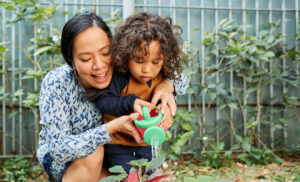 Create a nature sculpture with your child. Use materials you find on your outdoor adventures: sticks, leaves, pebbles, shells, bark. Give children tape, small wire, and glue for joining materials together. Put materials in a place where children can create for a few days and where this wonderful sculpture can dry.
Create a nature sculpture with your child. Use materials you find on your outdoor adventures: sticks, leaves, pebbles, shells, bark. Give children tape, small wire, and glue for joining materials together. Put materials in a place where children can create for a few days and where this wonderful sculpture can dry.
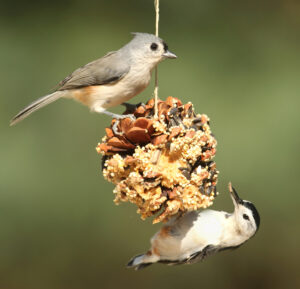 Open your own “Bird Café.” Give children a medium pinecone or dried corncob. Have them use a plastic knife to spread peanut butter on it. Roll it in bird seed, sunflower seeds, or crushed granola. Hang your creations on a string outside your window, or wherever it can be easily observed. Observe the birds that come to your Bird Café and talk about how they look, what color they are, and what they sound like.
Open your own “Bird Café.” Give children a medium pinecone or dried corncob. Have them use a plastic knife to spread peanut butter on it. Roll it in bird seed, sunflower seeds, or crushed granola. Hang your creations on a string outside your window, or wherever it can be easily observed. Observe the birds that come to your Bird Café and talk about how they look, what color they are, and what they sound like.
Make flower cards. Collect small, delicate wildflowers from your backyard or another outdoor area. Show children how to place the flowers between sheets of paper towels or newspaper and then lay them between heavy books. Give the flowers a few days to dry and flatten out, and then work with your child to glue your dried-flower creations to pieces of folded cardstock—great practice for fine motor skills! Help your child write a special message inside one or more of the cards and send them to loved ones, via mail or email.
Share these nature-themed activities with families to help them enhance bonds with young children this spring and summer and nurture their development in key areas, including language, motor skills, and problem-solving. Have another favorite nature activity? Tell us about it in the comments below!
P.S. Don’t forget that activities should be supervised at all times by an adult. Any material, food, or toy given to a young child should be reviewed for safety.
- Activities 1-4 adapted from Talk to Me, Baby! by Betty Bardige
- Activity 5 adapted from Coaching for Diversity, Equity, Inclusion, Accessibility, and Belonging in Early Childhood by Anni K. Reinking & Laycee Thigpen
- Activity 6 adapted from Preschool Education in Today’s World by M. Susan Burns, Richard T. Johnson, & Mona M Assaf
- Activities 7-11 adapted from ASQ®-3 Learning Activities by Elizabeth Twombly and Ginger Fink

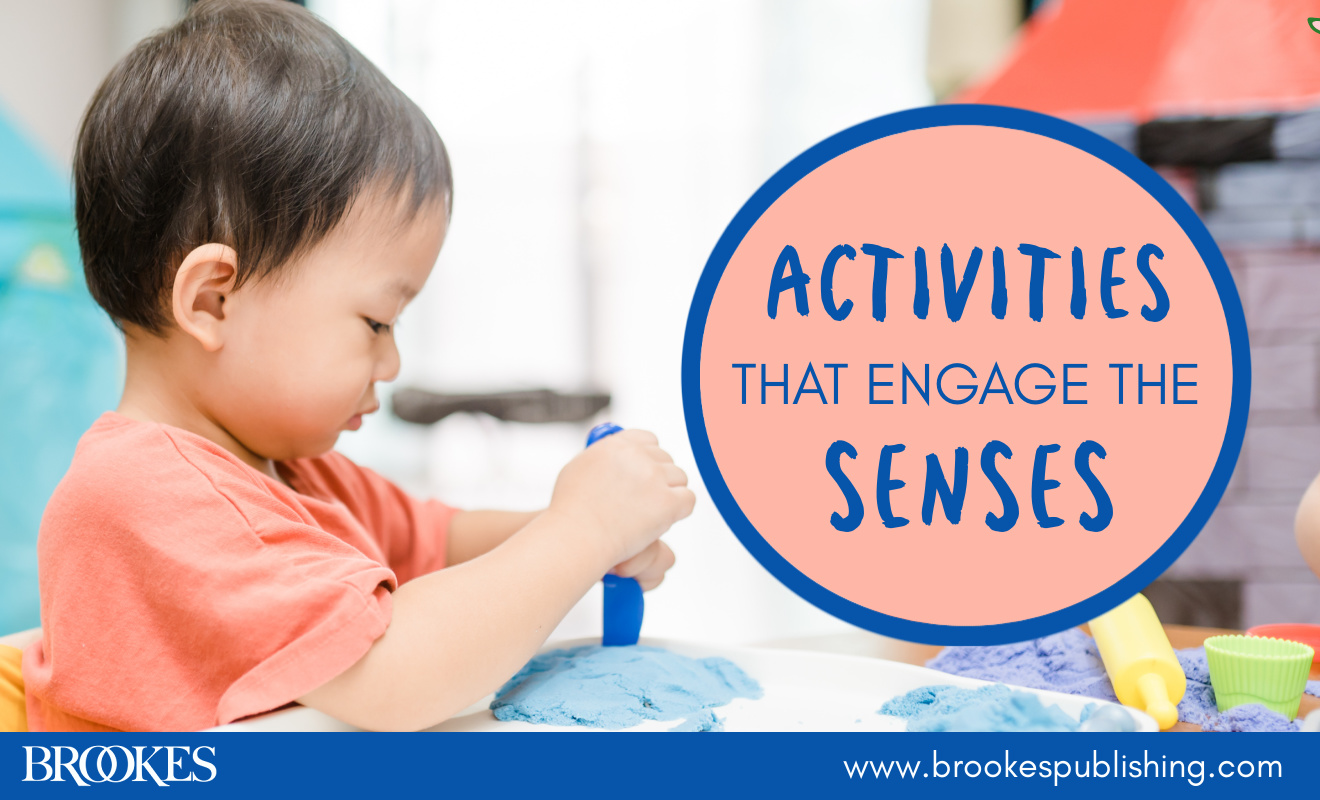

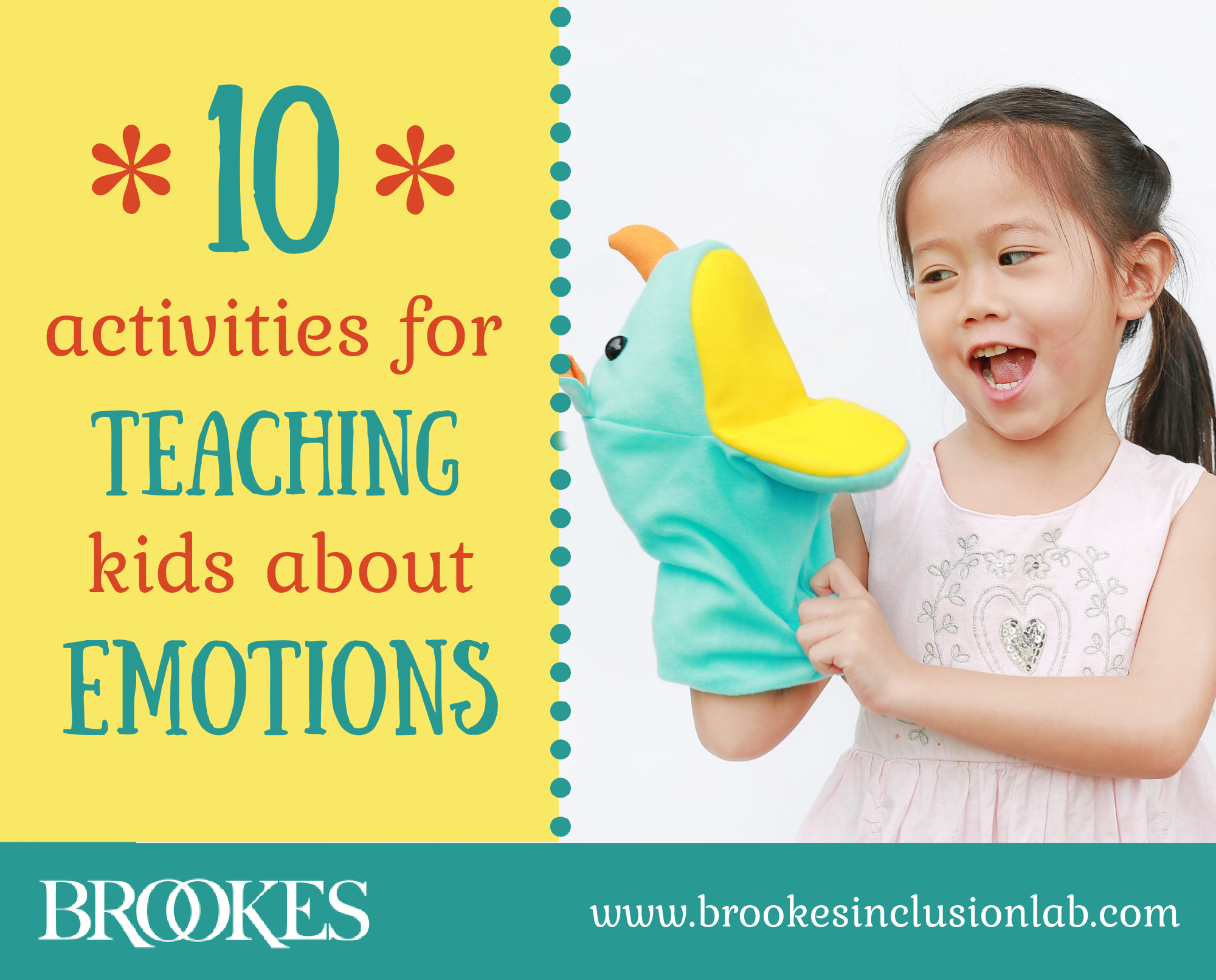
Write a Comment
Your email address will not be published. Required fields are marked *
Post a Comment